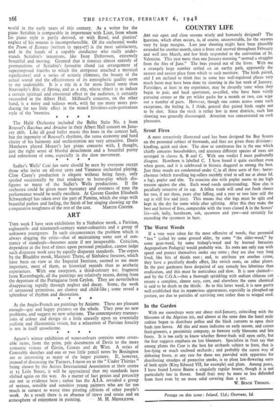Scout Fires A most attractively illustrated card has been designed
for Boy Scouts on the perennial subject of firewoods, and fires are given three divisions: kindling, quick and slow. The slow or continuous fire is the one which chiefly concerns householders, and nineteen different species of trees are arranged in classes A, B and C. With one verdict I most profoundly disagree. Hawthorn is labelled C. I have found it quite excellent even when green, and it is celebrated in historic doggerel as among the best. Just three woods are condemned under C in all three sorts of fire: horse- chestnut (which travelling log-sellers recefitly tried to sell me at about Id. a log), poplar and elm. To associate elm with poplar seems to me high treason against the elm. Each wood needs understanding. Now elm is peculiarly retentive of its sap. A fallen trunk will send out fresh shoots for two, if not three, years after falling, and a year or two later still the sap is still live and juicy. This means that elm logs must be split and kept in the dry for some while after splitting. After this they make the best and hottest of fires, comparable with the trees classed A in the Scouts' list—ash, holly, hornbeam, oak, sycamore and yew—and certainly far exceeding the sycamore in heat.






























 Previous page
Previous page